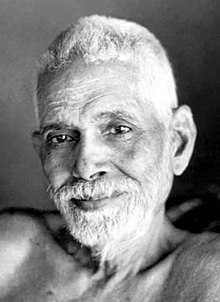evam bahuvidhã yajnã
vitatã brahmano mukhe
karmajãn viddhi tãn sarvãn
evam jnãtvã vimoksyase
Many diverse disciplines are very elaborately described in the Vedas. All are born of karma. Understand them. Knowing this, you will be liberated! ( 4:32)
Muitas e variadas disciplinas muito bem elaboradas são descritas nos Vedas. Todas nascem do
karma. Entenda-os . Conhecendo isso,você será liberado!(4:32)
In the great ancient Vedic works the form of Lord Vishnu is highlighted. In the Rig Veda, Purusha as he is Agni-Vaishvanara,the Cosmic Man, connecting to Narayana. Baby Agni is also - as baby Krishna, born from the cosmic ocean and how the soul,represents the waters primevel as the Self in the heart (RigVeda.X.5.1).
Nas grandes e antigas obras védicas a forma do Senhor Vishnu é destacada. No Rig Veda, como Purusha ele é Agni-Vaishvanara, o Homem Cósmico, conectando a Narayana. Baby Agni é também - como baby-Krishna, nascido a partir dos oceanos cósmicos e como a alma, representa as águas primevel como o Self no coração (Rig Veda.X.5.1).

Os Vedas são, talvez, o mais antigo texto escrito em nosso planeta hoje. Elas remontam aos primórdios da civilização Hindu . Eles devem ter sido passados através da tradição oral por mais de 100 mil anos. Eles vieram até nós em forma escrita entre 4-6.000 anos atrás.
The Vedas are perhaps the oldest written text on our planet today.They date back to the beginnings of Hindu civilization. They must have been passed through oral tradition for over 100,000 years.They came to us in written form between 4-6000 years ago.
Os Vedas são divididos em quatro grupos, Rigveda, Yajurveda, Samaveda e Atharvaveda. Cada grupo tem um texto original (Mantras) e uma porção comentário (Brahmana).
The Vedas are divided into four groups, Rigveda, Yajurveda, andAtharvaveda Samaveda. Each group has an original text (Mantra)and a comment portion (Brahmana).
O Brahmana novamente tem duas partes, um ritual de interpretação e os outros da filosofia. As porções de interpretar a filosofia dos textos originais constituem os Upanishads.
The Brahmana again has two parts, an interpretation of ritual and the other of philosophy. Portions of interpreting the philosophy of the original texts are the Upanishads.
Vedanta is a spiritual growth process explained in the Upanishads, which is concerned primarily with self-realization by which one canunderstand what the real nature of reality, the Supreme Being(Brahman).
Vedanta é um processo de evolução espiritual explicada nos Upanishads, que se preocupa principalmente com a auto-realização, através da qual se pode compreender qual a real natureza da realidade , do Ser Supremo (Brahman).
Vedanta is "the goal of all knowledge" - Vedanta is based onimmutable spiritual laws that are common to religious and spiritual traditions around the world, refers to a state of self-realization or cosmic consciousness.
O Vedanta é "a meta de todo o conhecimento" - O Vedanta se baseia nas leis espirituais imutáveis que são comuns às tradições religiosas e espirituais ao redor do mundo, se refere a um estado de auto-realização ou de consciência cósmica.
is a state of transcendence, and not as a concept that can only be grasped by the intellect.
é um estado de transcendência, e não como um conceito que pode ser compreendido apenas pelo intelecto.

Swami Vivekanda (1863-1902), discípulo de Sri Ramakrishna Paramahansa, foi o primeiro Sábio Hindu a vir ao ocidente e expor a filosofia do Vedanta, tendo assim colaborado grandemente para a sua atual popularidade entre os círculos espirituais ocidentais. Posteriormente, Sri Ramana Maharshi (1879-1950) simplificou o Advaita e tornou-o acessível a todos.
Swami Vivekanda (1863-1902), disciple of Sri RamakrishnaParamahansa, was the first Hindu Sage to come to the West and to expose the philosophy of Vedanta and thus contributed greatly to itscurrent popularity among Western spiritual circles. Later, SriRamana Maharshi (1879-1950) simplified the Advaita and made itaccessible to everyone.
'Each soul is potentially divine . The goal is to manifest this divinity within by controlling nature , external and internal.
"Cada alma é potencialmente divina. O objetivo é manifestar essa divindade interior, e controlar a natureza, interna e externa.
Condemn none: if you can stretch out a helping hand, do so. If you cannot, fold your hands, bless your brothers and let them go their own way'.
" Não condene nada : se você pode estender a mão, faça isso. Se não for possível, dobre as mãos, e abençoe seus irmãos e deixe-os seguir seu próprio caminho "
You cannot believe in God until you believe in yourself.
"Você não pode acreditar em Deus até que você acredite em si mesmo."
'When we really begin to live in the world, then we understand what is meant by brotherhood or mankind, and not before.'
"Quando realmente começamos a viver no mundo, então nós entendemos o significado de fraternidade ou humanidade, e não antes."
 |
| Bhagavan Sri Ramana Maharshi |
Bhagavan Sri Ramana Maharshi (30 de dezembro de 1878 — 14 de abril de 1950), mestre de Advaita Vedanta e homem santo do sul da Índia.Ensinava o jnãna, ‘via do conhecimento espiritual’ mais puro. Ao mesmo tempo, ressaltava que as outras duas outras grandes vias espirituais, a do karma (das ações) e da bhakti (devoção) estavam contidas no jnãna. Yoganandaji esteve com ele e faz referência a ele na sua autobiografia assim como Outro famoso espiritualista que foi ao ashram receber o darshan de Ramana foi Mahatma Ghandi, em busca de apoio para seu movimento de libertação da Índia.
Bhagavan Sri Ramana Maharshi (December 30, 1878 - April 14, 1950), master of Advaita Vedanta and holy man in southernÍndia.Ensinava jnana, 'path of spiritual knowledge' purer. At the same time, remarked that the other two major spiritual paths, thekarma (actions) and bhakti (devotion) was contained in jnana.Yoganandaji stayed with it and references it in his autobiography as well as other famous spiritualist who was to receive the darshanashram of Ramana was Mahatma Gandhi, seeking support for hisliberation movement in India.
"Be still and know that I am God "
In this state of silence alive, awake, the knower, knowledge and the object of knowledge, whatever it is, they are one.
"Aquieta-te e sabe que Eu Sou Deus"
Nesse estado de silêncio vivo, desperto, o conhecedor, o conhecimento e o objeto do conhecimento, qualquer que seja ele, são um só.
Só há separação no mundo das representações, das construções mentais, no mundo "daquilo que não é".
Only a separation in the world of representations , of mind constructions,in the world " what is not. "
Nesse sentido, conhecer a verdade acerca de si mesmo é conhecer a verdade acerca de todos os seres e de todas as coisas.
In this way, knowing the truth about oneself is to know the truth ofall beings and all things.
Conhecer a verdade acerca de si mesmo é ser essa verdade, já que não somos dois, um para conhecer o outro.
Knowing the truth about himself that is to be true, since there aretwo, one to know one another.


Paramahamsa Prajnanananda Maharaj Lineage
 |
| Paramahamsa prajnanananda Maharaj |
Past lifes influence this present lifetime and this present life influences the future. So be careful today and spend every moment in God consciousness.
Vidas passadas influenciam a vida presente ea vida presente influencia o futuro. Portanto, tenha cuidado hoje e passe cada momento na consciência de Deus.
Prarabdha is the accumulated effect of past karma or actions.Today are you enjoing the fruit of your past actions.
Prarabdha é o efeito acumulado do carma passado ou ações. Hoje você está usufruindo o fruto de suas ações passadas.
Samskara means tendency or habit. Once formed a habit becomes powerfull, so powerful that it is dificult to overcome.
Samskara significa tendência ou hábito. Uma vez formado, o hábito se torna poderoso, tão poderoso que é dificil de superar.
To change a habit one has to change one's outlook.
Para mudar um hábito é preciso mudar de perspectiva.
Realize that is no external object can give you happiness and peace of mind, but only temporary and limited happyness, when is vanishes one is again unhappy.To attain eternal happiness one has to go inside .
Perceba que não é objeto externo pode lhe dar felicidade e paz de espírito, mas é só felicidade temporária e limitada, quando ela desaparece o torna infeliz novamente. Para alcançar felicidade eterna é preciso ir para o interior.
Our life is meant for self-realization, for knowing the Self.
Nossa vida é destinada a auto-realização, para conhecermos o Self .
In Sanskrit, Kriya means “work is worship,” Vedanta means “path of knowledge,” and Gurukulam refers to an ancient system of education. An ashram is a spiritual retreat. Thus, the Kriya-Vedanta Gurukulam (Midwest) is a retreat where one strives to live by the principles of spiritual life in order to realize the joy of the Divine.
Em sânscrito, Kriya significa "o trabalho é adoração", Vedanta significa "caminho do conhecimento", e Gurukulam refere-se a um antigo sistema de educação. Um ashram é um retiro espiritual.Assim, o Gurukulam Kriya-Vedanta (Centro-Oeste) é um refúgioonde se esforça para viver segundo os princípios da vida espiritual, a fim de perceber a alegria do Divino.
